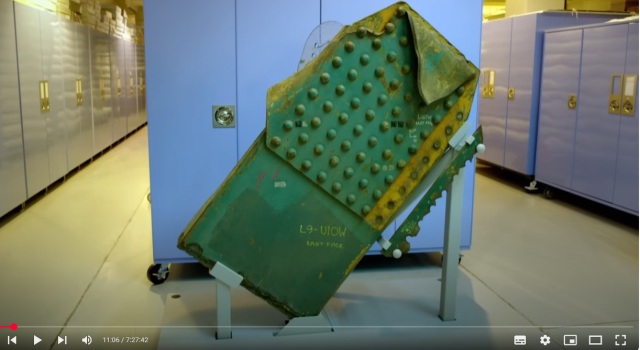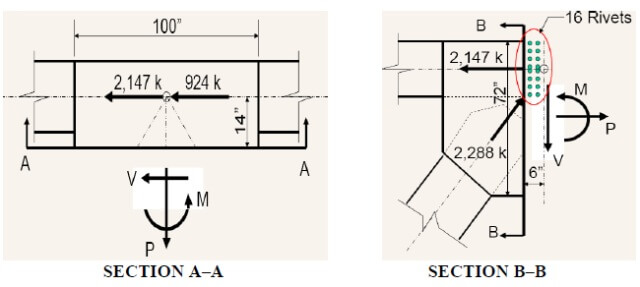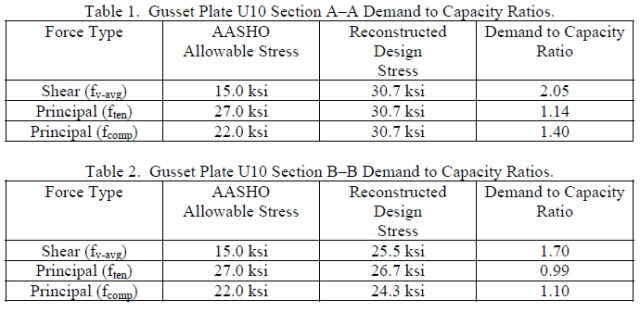Season3-Episode1에 나오는 I-35W Bridge는 사고 당시에 글을 남긴 적이 있다. 사고 발생 후 거의 20년이 다 되어 가니 그동안 더 많은 정보들이 생성되어 이번 기회에 다시 한 번 정리를 한다.
공식적인 NTSB 보고서가 있어 사고 원인에 대한 자세한 정보는 확인이 가능하다. 직접적인 원인은 U10 절점부에 설치된 gusset 플레이트 두께(1/2″)가 실제 요구되는 구조 성능(1″ 두께이상)에 비해 매우 부족해서 붕괴되었다.

- The initiating event in the collapse of the I-35W bridge was a lateral shifting instability of the upper end of the L9/U10W diagonal member and the subsequent failure of the U10 node gusset plates on the center portion of the deck truss.
- Because the deck truss portion of the I-35W bridge was non-load-path redundant, the total collapse of the deck truss was likely once the gusset plates at the U10 nodes failed.
NTSB 보고서에서도 언급하는 FHWA 보고서는 수치해석을 통해 명백하게 gusset 플레이트 설계 오류를 확인해준다. 최초 설계에서는 주요 트러스 gusset 플레이트 설계계산이 포함되어 있지 않았고, 교량 바닥 트러스 gusset 플레이트에 대한 설계만 포함되어 있어 여기에 적용한 설계 방법을 사용하여 주트러스 gusset 플레이트의 설계 계산을 재현한 결과였다.
보고서에서 주요하게 언급한 요구역량비(demand to capacity (D/C) ratios)를 보면 U10 gusset 플레이트에 작용하는 전단응력은 허용응력을 훨씬 상회함을 알 수 있다. 또한, 플레이트의 국부좌굴을 방지하기 위한 AASHTO length of unsupported edge limitation(d/t<48) 규정도 d/t=60으로 만족치 못했다.


마지막으로, 이 사고와 관련하여 저명한 Henry Petroski 교수가 기고한 글 중 일부를 다시 인용한다.
In bridge design, as in all structural engineering, success can breed hubris and catastrophe, while failure nurtures humility and caution. [Learning from bridge failure]